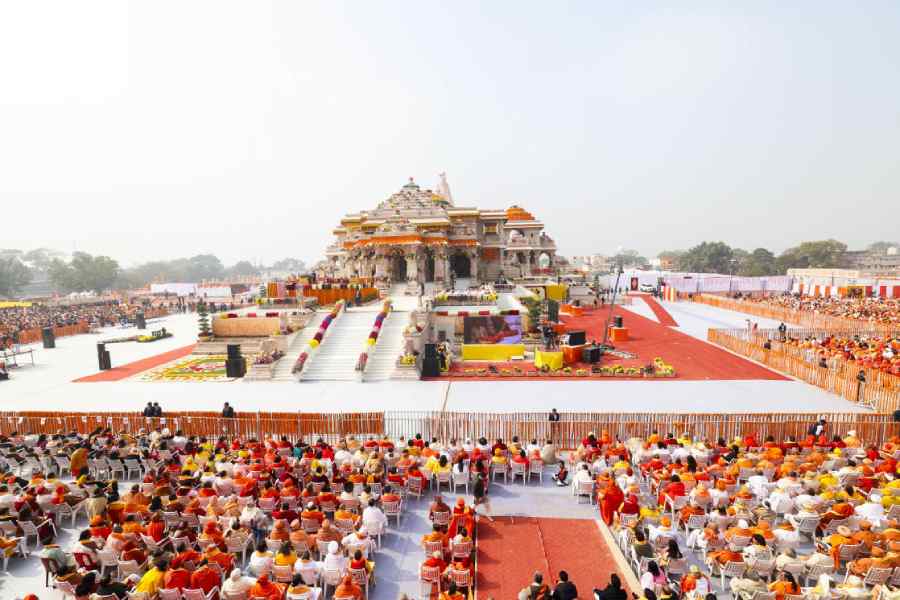The Yogi Adityanath government is all set to host its eighth Deepotsav in Ayodhya this year, with grand and "environmentally conscious" preparations underway for the first Diwali at the newly built Shri Ram Janmabhoomi temple.
The Uttar Pradesh government said it aims to create a new world record by lighting 25 to 28 lakh lamps along the banks of the Saryu River, while special eco-friendly lamps will illuminate the Ram temple. These lamps are designed to prevent stains and soot from affecting the temple's structure and will remain lit for extended periods.
The government said environmental protection is also a key focus for this Deepotsav. Special wax lamps will be used to minimise carbon emissions and protect the temple from soot damage.
The Ram temple complex, which will be adorned by special floral decoration, has been divided into various sections for decoration, with each section assigned specific responsibilities, the government said in a statement.
The overall supervision of lighting, entrance arch decorations, and thorough cleaning have been entrusted to Ashu Shukla, a retired IG from the Bihar cadre.
The temple trust aims to make Ayodhya not just a centre of religion and faith this Diwali, but also a symbol of cleanliness and environmental consciousness, the release said.
To ensure the Deepotsav's grandeur leaves a lasting impression, Shri Ram Janmabhoomi Teerth Kshetra has decided to keep the temple open for 'Bhavan Darshan' from October 29 to November 1 until midnight, it said.
Visitors can see the temple from Gate No 4B (luggage scanner point) to marvel at its grand decorations. This festival of lights will convey a message of faith, environmental stewardship, and beauty, making Ayodhya's Deepawali a truly global spectacle, the statement added.
An idol of Ram Lalla was consecrated at the Ayodhya temple on January 22, a landmark event led by Prime Minister Narendra Modi who also gave a clarion call to go beyond the grand mandir's construction to build the foundation of a "strong, capable and divine" India of the next 1,000 years.
Except for the headline, this story has not been edited by The Telegraph Online staff and has been published from a syndicated feed.











